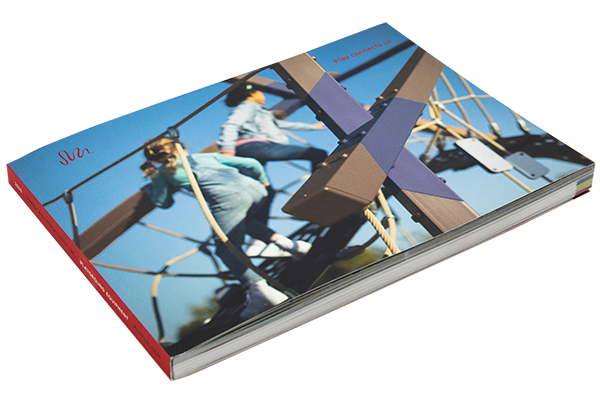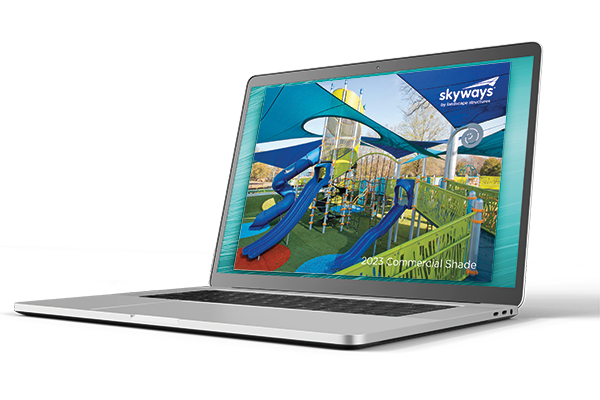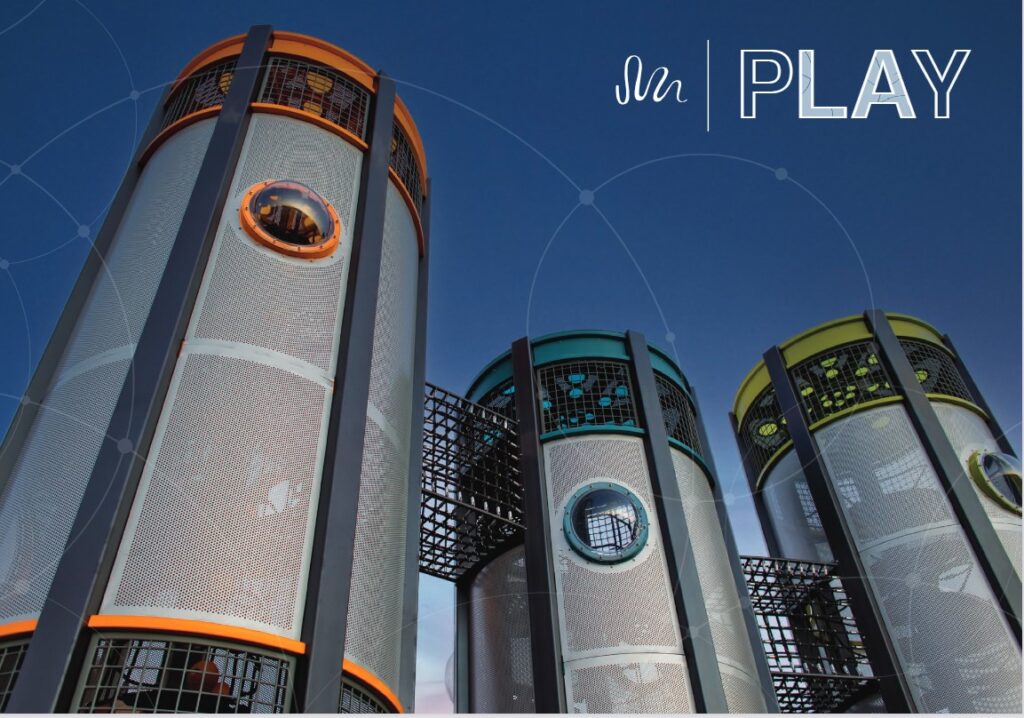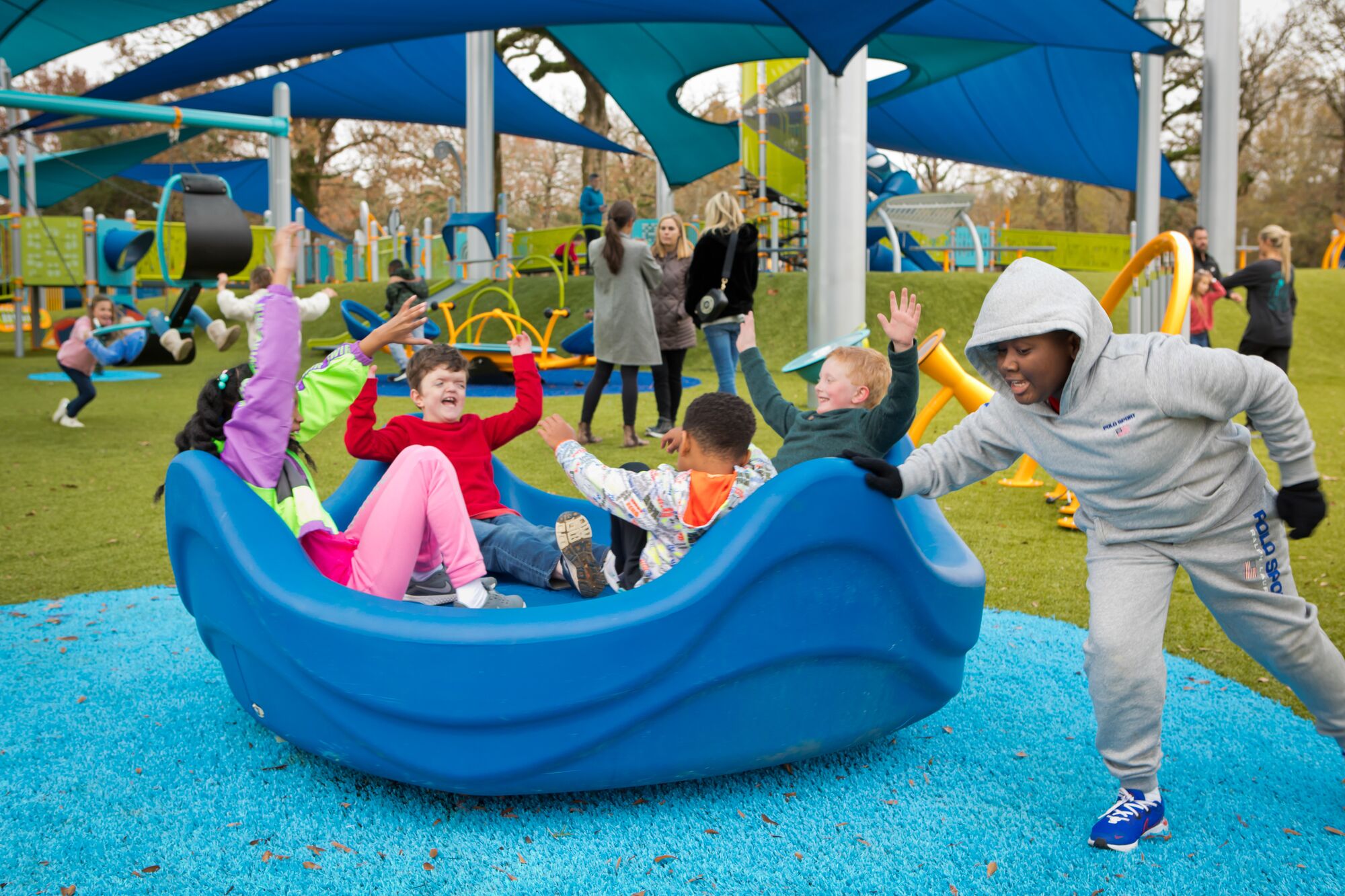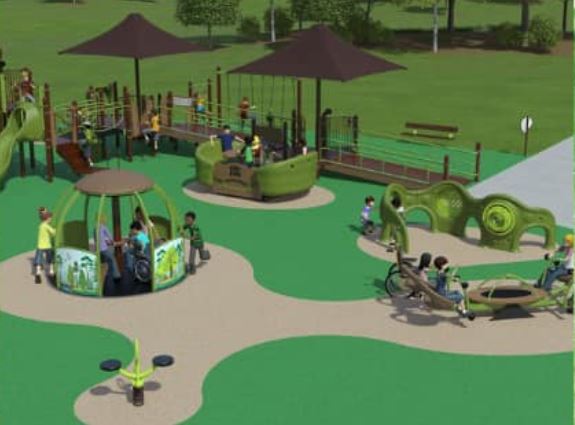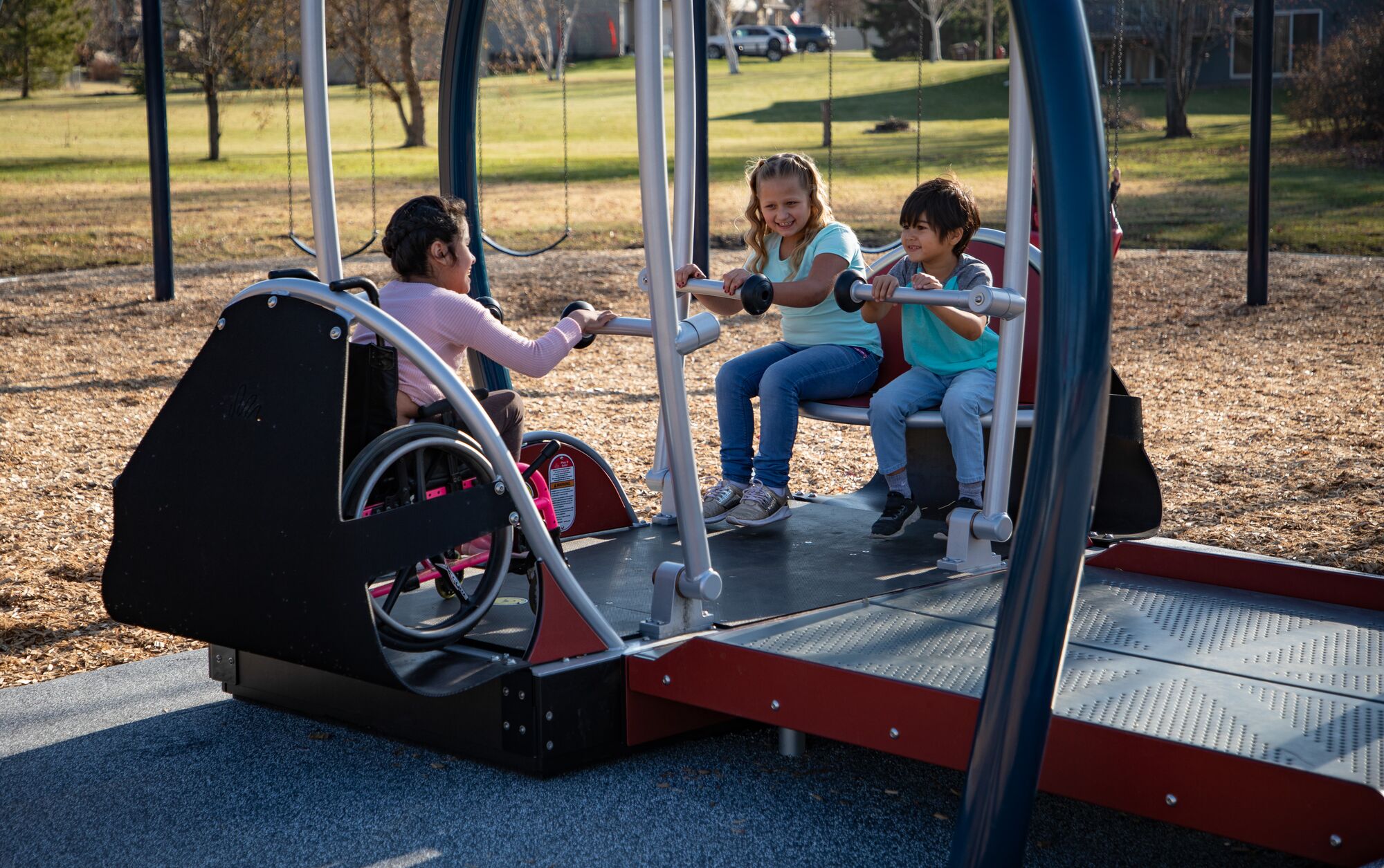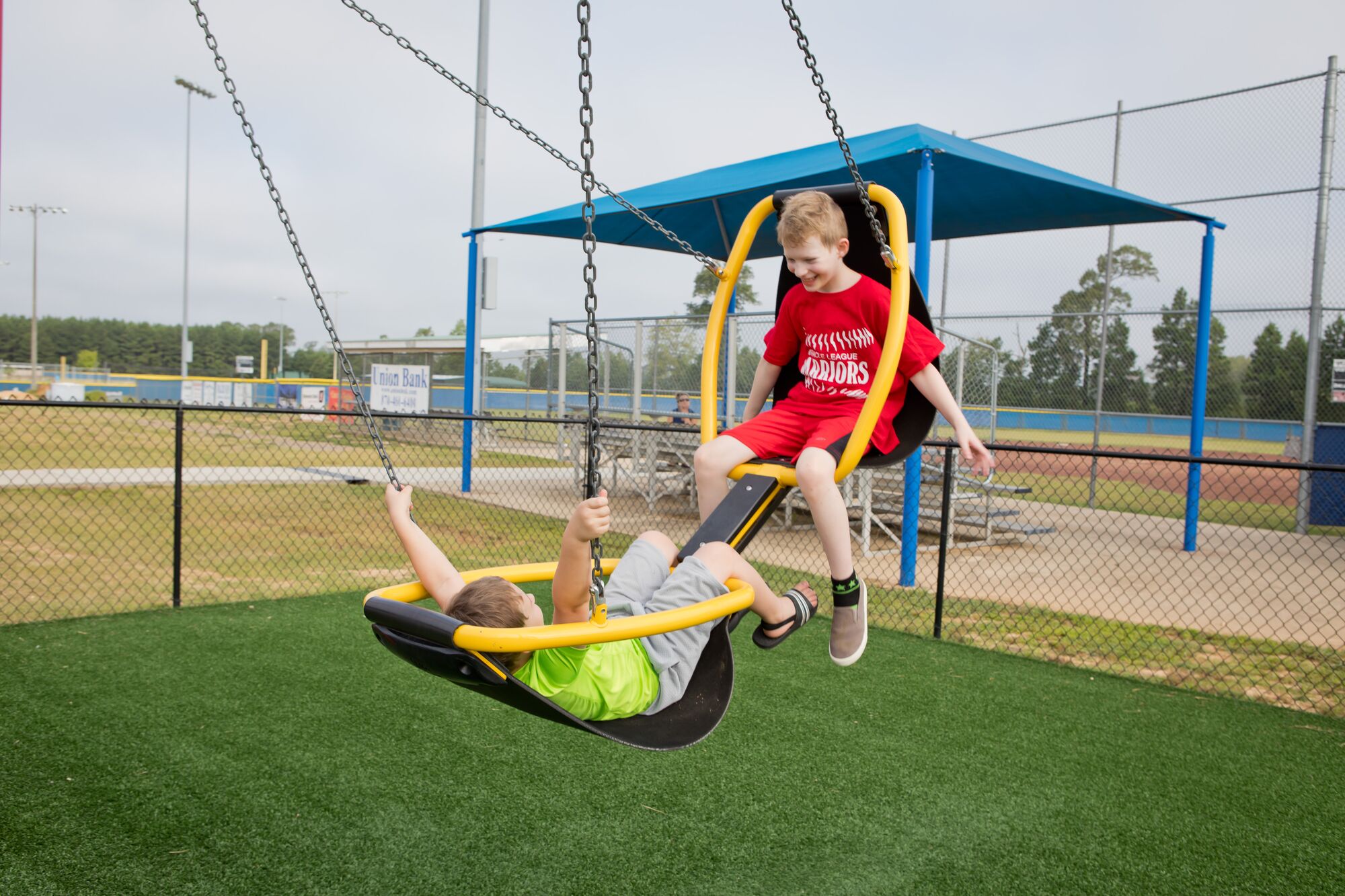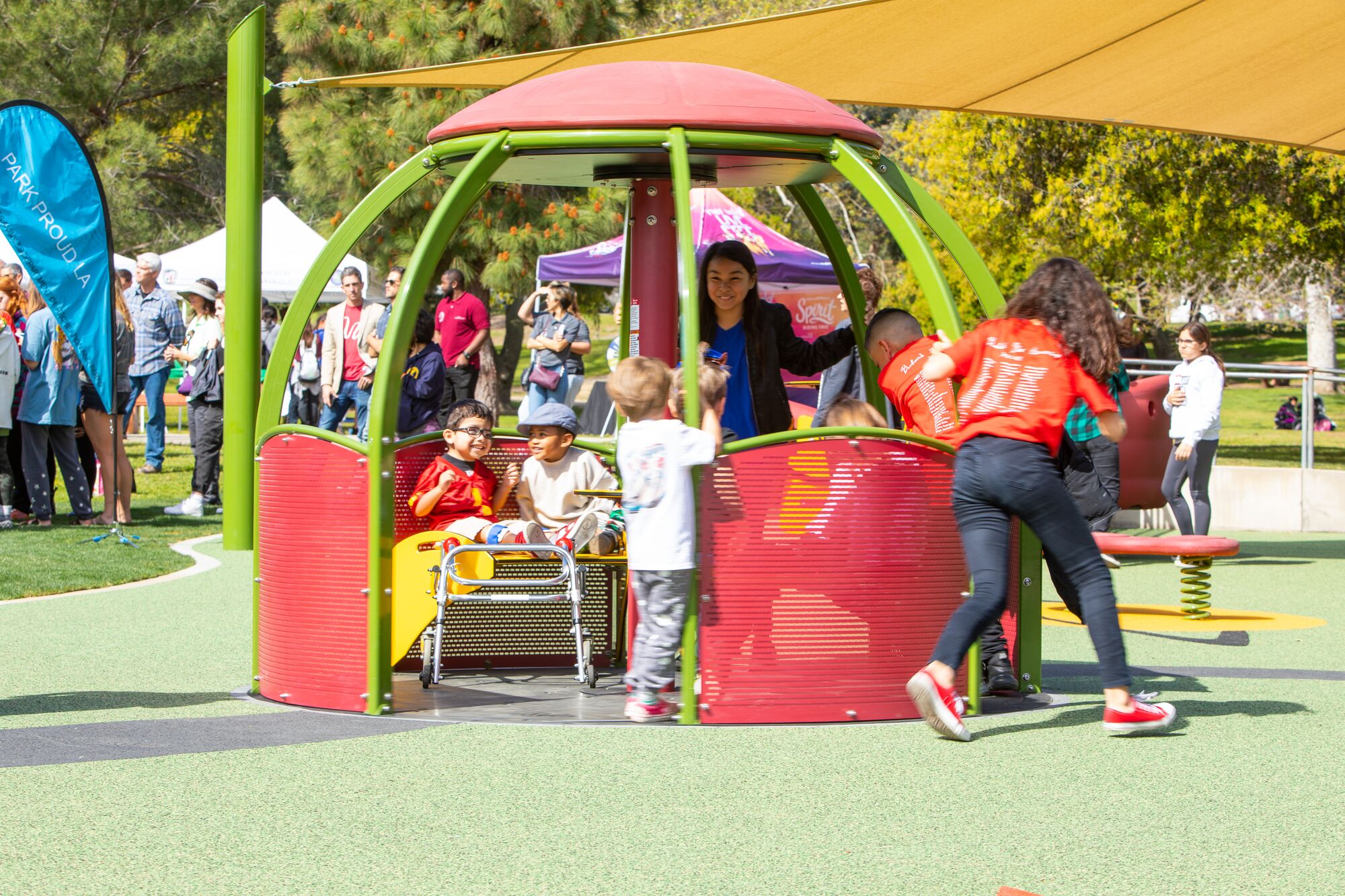Forma™ brings a contemporary vibe to any play environment. With its architectural influences, endless color possibilities and open sightlines, Forma creates the perfect complement to any play setting. The Forma playsystem designs fit into any environment whether you’re looking for a nature-inspired style or something more modern. Kids will love the dynamic, challenging and inclusive play opportunities provided by the sensory-rich mix of materials found in Forma playsystem designs. Experience Forma here.
Forma Playsystem Slides

Forma Alpine® Slide – Ages 5 to 12. An easy-to-traverse belting ramp allows all users to reach the slide and swoop back to the ground along the slide’s banking curve.
Forma SlideWinder2® Slide – Ages 5 to 12. After reaching the Forma SlideWinder2 Slide via the belting ramp, riders can whoosh and curve back to the ground.

Forma Climbers

Fortress™ Multi-Climber – Ages 5 to 12. With climbing challenges of varying difficulty, the asymmetrical shapes, angles and mix of materials create a unique play experience.
Folio™ Balance Climber – Ages 5 to 12. Deliver three unique experiences for children of all abilities with the slack line, cable-wrapped balance beam and wobbly steps.


Forge™ Climber – Ages 5 to 12. The Forge Climber includes a large cable climber and two unique panels with mirror cutouts for sensory play.
Footprint™ Steppers – Ages 2 to 5, 5 to 12. Add Footprint Steppers to your Forma play area for more climbing activity or to play-functionally link different play events.


Footprint Balance Beam – Ages 2 to 5, 5 to 12. Challenge kids to improve their balance and agility while they traverse the length of the Footprint Balance Beam.
Foxtrot™ Multi-Climber – Ages 2 to 5. Stepping pods, a side-to-side climber, bouncy bridge, and shape sliders deliver active and sensory fun for many kids at once.


Forma Giggle Jiggler® Climber – Ages 2 to 5. Kids will love to balance and shimmy on the Forma Giggle Jiggler. Plus, a floating panel and stepper deliver extra sensory and active play.
Sensory Fun
Focal™ Sensory Wall – Ages 2 to 5, 5 to 12. Play on both sides deliver opportunities for walk-up or roll-up access so everyone can participate in the fun.


Fox Den™ Hangouts – Ages 2 to 5, 5 to 12. Offer kids an escape from the hustle and bustle of the playground with seats for one or many.
Motion & More Fun
Forma Sol™ Spinner – Ages 5 to 12. Deliver spinning motion kids need for healthy growth and development, plus more sensory fun with the Rain Sound Wheel Panel.


Footprint Wobble Stepper – Ages 5 to 12. The Footprint Wobble Bouncer maintains the aesthetic of Forma, while providing wiggly, bouncy fun for one or more kids.
Forma Swing Frame – ages 2 to 5, 5 to 12. The angular design of the Forma Swing Frame fits a Forma playground design or adds interest to any play setting.

Forma Playsystem Designs
With its architectural influences, endless color possibilities and open sightlines, Forma creates the perfect complement to any play setting. See some of the suggested color palettes below, and go to playlsi.com/forma to explore more.




The beauty of play is that it’s not just play at all. It’s magic. An opportunity to make connections. Share that beauty of play with your community. Contact your local Landscape Structures playground consultant to start on your Forma playground designs today.

